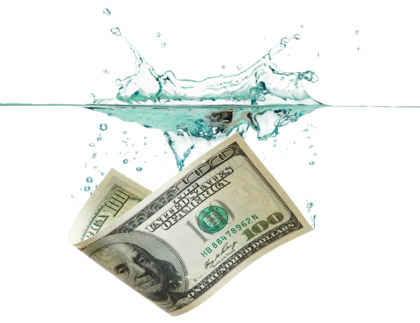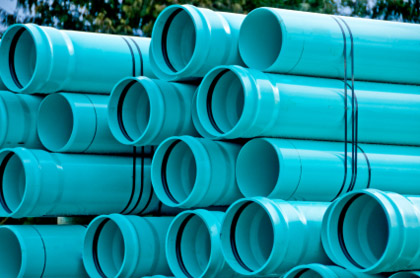Promoting Sustainable Water Systems
In 1787 the Founding Fathers knew they were forging a charter of freedom to create a new nation by the voice of the people. What they did not realize is that 225 years later the United States would continue to educate and to shape public understanding by “promoting the general welfare” through adoption of sustainable practices. One of the greatest challenges America currently faces as a nation deals with its water systems. From managing fresh water sources to treating and delivering high-quality water to the tap, water impacts personal health and economic well-being. More than two and one-half centuries ago Thomas Fuller wrote, “We never know the worth of water till the well is dry.” Prudent government dictates that the global community should embrace standards that promote sustainability practices at affordable levels.
For the last decade, the American Water Works Association (AWWA) has declared that the age of pipe renewal and replacement is upon the U.S. Water and wastewater systems costs are increasing and the infrastructure-funding gap continues to grow as reported in 2010 by the U.S. Conference of Mayors Water Council. The majority (60 percent) of replacement costs are for water transmission and distribution pipes. In 2007, the EPA estimated the gap at $200.8 billion just for drinking water. (Given that the economic downturn has resulted in deferred maintenance and delayed capital projects, this number should top $250 billion.) If the amount was mostly financed through long-term 30-year debt to achieve intergenerational equity among ratepayers, the figure would increase to $500 billion through the next 20 years. The funding of wastewater systems and combined sewer systems and overflows could double the estimate. Evidence of this imminent issue is the growing number of water main breaks, sink holes and boiling water notices in communities. As a result of age and corrosion, all pipes will need to be repaired or replaced within the next few decades at enormous cost to ratepayers.
The Cost of Corrosion & Water Loss. The cost of corrosion is frightening for those responsible for the public purse. According to a 2002 congressional study, it is a drag on the economy costing U.S. drinking water and wastewater systems more than $50.7 billion annually or more than $1 trillion dollars within the next twenty years. Old technology piping materials have also contributed to the decline of water quality and are responsible for a staggering amount of water loss each year. All told, leaking, corroded pipes lose some 2.6 trillion gallons of drinking water every year or 17 percent of all water pumped in the United States. This is not a good record to take back to the public as reported at www.watermainbreakclock.com.

© iStockphoto.com/ansonsaw
Water Affordability. Local funds are expected to cover the cost of the majority of the nation’s water infrastructure needs and, therefore, the rate-paying public will have to finance replacement of water infrastructure either through higher rates or taxes. The Environmental Protection Agency (EPA) continues to set public policy strategies for 21st Century water challenges. And, in its pronouncements the Agency is signaling its belief that these challenge will require an allocation of 5 percent of average household median income to fund basic water and wastewater services in coming years. For many citizens this represents a 200 to 400 percent rate increase when 20 percent of lower-income families may already be paying more than 4 percent of their household income for water (www.AgingWaterInfrastructure.org).
Taking a Public-Centric Approach. As pipe replacement and water quality corrosion issues are framed with a “public-centric” focus embracing environmental and financial sustainability, adoption of new materials and technologies is required.
With more than two million miles in service, PVC pipe has been celebrated by Engineering News Record as one of the top 20 engineering advancements of the last 125 years. A study by the American Water Works Research Foundation recently quantified the life expectancy of PVC pipe at more than 110 years, thus making it excellent for long-term asset management and sustainability. Furthermore, PVC pipe is more efficient to manufacture, taking four times less energy to make than concrete pressure pipe and one-half that used for iron pipe. As well, PVC pipe is cost-effective, has watertight joints and its light weight reduces transportation and installation costs, thus yielding additional greenhouse gas reductions. While little has entered into the recycling stream due to its longevity, PVC is 100 percent recyclable from cradle-to-grave with energy-saving benefits. And it requires little or no maintenance, such as expensive corrosion control treatments, thus making it friendlier than many so-called “green” alternatives.
These benefits of PVC technology have accrued significantly to water systems. Many utilities have been able to save more than 30 percent of capital improvement plans (CIP), which represents hundreds of millions of dollars, by selecting non-corrosive, environmentally friendly, durable PVC pipe. A 2004 study (Thomas Huelsmann and Reinhard E. Nowack’s 70 Years of Experience with PVC Pipes, 13th World Pipe Symposium) in Europe showed PVC pipe had a design life of more than 170 years. And it does not deteriorate water quality or reduce hydraulic pressure with internal corrosion, which lowers overall cost-of-ownership.
Adopting Sustainability Practices
A 2005 study (Estimate of Energy Consumption and CO2 Emissions Associated with Production, Use and Final Disposal of PVC, HDPE, PP, Ductile Iron and Concrete Pipes, Universitat Politecnica de Catalunya) examined energy consumption in which the same lifetime (50 years) was assumed, and the energy consumption associated with operation and maintenance was the same regardless of pipe. The study showed that in the case of pipes for drinking water, PVC pipe required the least amount of energy and generated the smallest amount of CO2 emissions, whereas recycled ductile-iron pipe had the poorest results according to the same measures. Even if recycled material is used in manufacturing the ductile-iron pipe, energy consumption is still 26 percent higher than for PVC pipe. The most unfavorable case corresponds to ductile-iron pipes without recycled material in which energy consumption ranges 56 percent higher than PVC. Applying a 100-year lifespan to PVC pipe longevity produces even greater environmental benefits since durability is one key to sustainability.

© iStockphoto.com/Paliman
This contrasts sharply with corrosion- prone metallic piping, which has been shown to last less than 20 years in some cases.
According to Bryan Karney, professor of civil engineering at the University of Toronto, a national program to replace older pipes with hydraulically efficient plastic pipes could achieve greenhouse gas emission reductions amounting to 5 percent of Canada’s former obligations under the Kyoto Protocol. PVC was chosen because it is corrosion-proof and leak-resistant. And, the ultra-smooth surface means less energy is required to pump water from source to tap.
PVC pipe has gained significant popularity worldwide not only because of its competitive price but also because of its longevity and high-performance characteristics. Longer-lasting and lower-maintenance infrastructure assets, such as PVC, save taxpayer dollars by making water systems more efficient. In Canada, Calgary and Edmonton are saving an estimated $5 million a year in avoided water main repair costs because of extensive use of PVC pipe. The Australian Green Building Council, administrator of the PVC credit as part of that country’s GreenStar Program, understands the importance of low-cost, sustainable materials, stating: “PVC cannot be ruled out as a material for use in the built environment.”
Further, PVC pipes do not contain lead or cadmium or other potential contaminants and are governed by strict standards and extensive quality control checks, including hydrostatic proof tests performed on each pipe segment. Green consumerism has jumped the gun on applying concerns to long-term sustainable and affordable underground PVC piping solutions. Moreover, PVC is resistant to corrosion and is, therefore, resilient in the face of climate change and changing soil conditions.
Shaping Public Understanding
So, what is preventing more widespread adoption of a technology that is environmentally superior and a good deal for taxpayers and ratepayers? As with most things, the issue is often simple inertia. Localities are used to working with older technologies. In some cases, officials try to exclude PVC as a consideration due to outdated and uncompetitive procurement practices. Solving our nation’s underground corrosion crisis will require openness to alternative and more resilient pipe materials, such as PVC. Fair competition, which drives innovation and keeps infrastructure renewal more affordable, is key to helping the U.S. achieve its sustainability objectives.
To maintain its water and sewer systems throughout the next century, and by extension its prosperity and quality of life, America must put in place a comprehensive asset management strategy, which will provide a sustainable level of asset performance to the ratepayer at the lowest life-cycle cost and at an acceptable level of risk to the organization.
There is an old saying that “water flows uphill toward money.” In the case of actually preserving our most precious natural resource, it will require a lot of money to get America modernized and to stop wasting trillions of gallons of drinking water each year. However, the amount of money required need not be so high if responsible choices are made. As Americans individually and collectively share a vision of improving their human condition, each citizen should also promote sustainable practices that will continue to “secure the blessings of Liberty to ourselves and our Posterity”




























